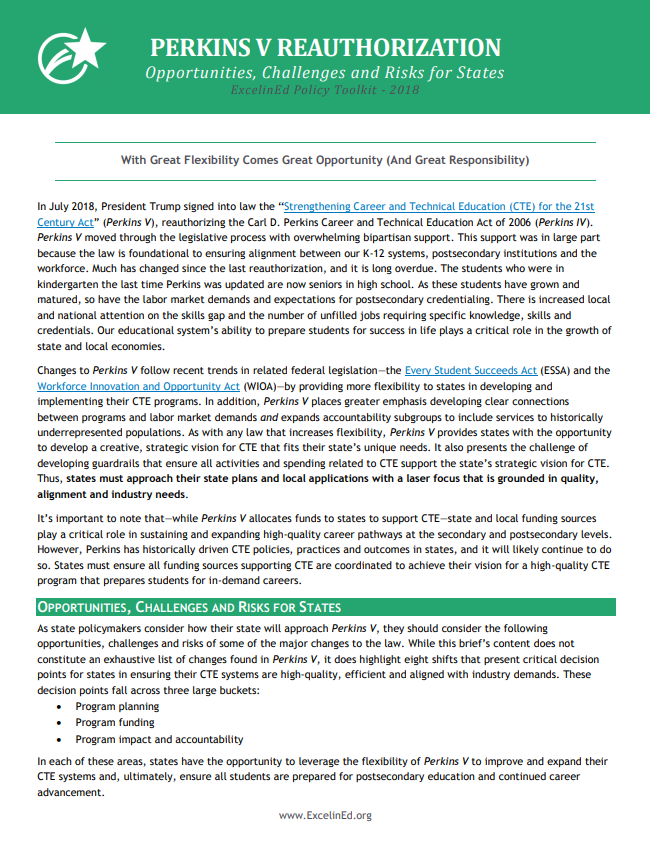The Strengthening Career and Technical Education for the 21st Century Act (Perkins V) provides state leaders with an opportunity to transform and improve their Career Technical Education (CTE) systems. This toolkit by ExcelinEd examines the opportunities, risks and challenges afforded by eight changes in Perkins V for states to consider to implement high-quality CTE programs:
1.States are encouraged to invest in early post secondary opportunities;
2. The state planning process requires stakeholder collaboration and review;
3. Local recipients must complete (and update) new Local Comprehensive Needs Assessment;
4. States and local recipients have more flexibility in how they spend Perkins funds;
5. States can invest more in innovation through “Perkins Reserve;”
6. There is a new definition of CTE concentrator;
7. States must choose among three new measures of secondary CTE program quality; and
8. States determine their own accountability goals and performance goals.







